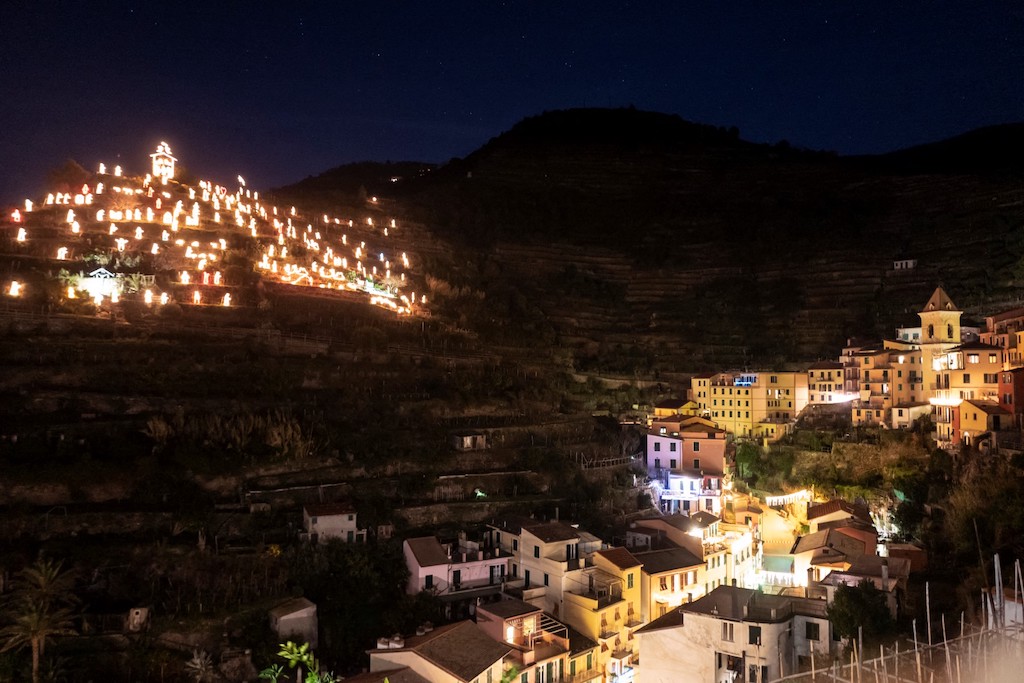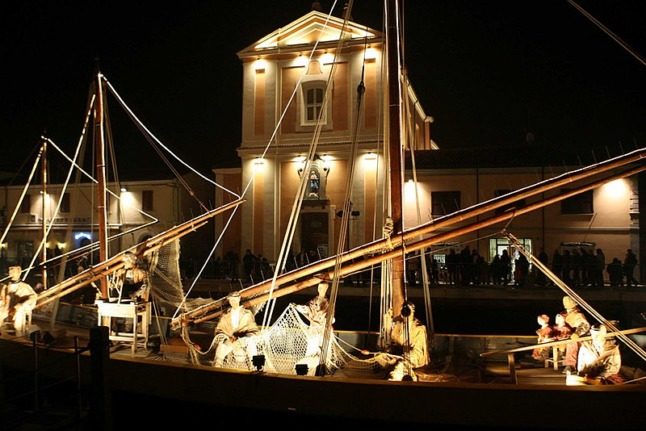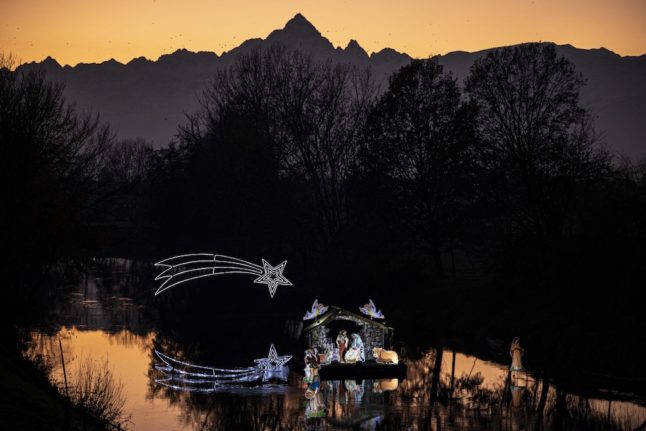1. The world’s largest
Let’s start with the world’s largest nativity scene, in Cinque Terre. Each year, the picturesque town of Manarola in the Liguria tourist spot is illuminated with over 15,000 lights – a tradition which began back in 1961 with a single cross.
The nativity scene today features than 150 statues illuminated using 8km of electrical cable.
IN PHOTOS: Magical nativity scene lights up Italy’s Cinque Terre coast

2. A life-sized diorama
If as a child you ever dreamed of shrinking to the size of a piece of lego and wandering around your scale model playset, as an adult you can – in the village of Mosso in Piedmont, whose streets and buildings become populated with 200 life-sized papier-mâché figures at Christmas.
At the Presepe Gigante di Marchetto, you can take a photo with villagers pushing applecarts, selling cheese at the market, weaving with wooden looms or fetching water from the well.
3. Neapolitan style
No one does nativities quite like Naples. Head to the city’s “Christmas Alley”, Via San Gregorio Armeno, for a glimpse into the workshops that turn out many of the crib figures displayed all over Italy.
READ ALSO: Italy’s Christmas markets: Where and when to visit in 2023
Among the usual characters, look out for fishmongers, butchers, pizza makers and other figures that have made their way into Neapolitan Christmas tradition – not to mention the pop stars, footballers, politicians and other public figures that craftsmen slip in there too.

4. Living nativities
You might do a double take when you first see one of Italy’s presepi viventi – they are made up of real people in character. And rather than being a small display, these theatrical productions are often staged across an entire town centre.
There are several living nativities across the country, but perhaps the most famous one is found in the southern Italian city of Matera, known for its ancient cave houses and magical landscape. Walking through a 5km route through the sassi, or old town, visitors pass shepherds and artisans who will direct them to the actual crib.
5. A coffee machine nativity
For a country of coffee-lovers, it only makes sense. This one, carved out of wood, can be seen at Rome’s annual 100 Presepi exhibition, displaying nativities of all materials and sizes from around the world.
6. An edible version
You definitely shouldn’t tuck into the nativity scene in Olmedo, Sardinia – but you could. The elaborate figures on display at the presepe di pane in the church of Nostra Signore di Talia are made entirely of bread.
READ ALSO: Where to catch Italy’s most impressive Christmas displays in 2023
7. On the water
The “floating nativities” of port town Cesenatico, Emilia-Romagna, are the only ones of their kind in the world. The boats display around 50 life-size statues throughout December, portraying a scene typical of the fishing village. Each year a new statue is added, and at night, lights bring the whole scene to life.

A floating nativity scene in Cesenatico. Photo: Wikimedia Commons
8. …and under it
Head to Laveno-Mombello on Lombardy’s Lago Maggiore for a look at a sunken nativity scene. The sight of the holy family – plus some seashells and palm trees – submerged in the waters of the lake makes for a surprising, but undeniably scenic, view.
Tutto pronto per la posa del Presepe Sommerso di Laveno Mombellohttps://t.co/TiXUYFBLPa pic.twitter.com/SR3LMFnd6d
— LuinoNotizie (@LuinoNotizie) November 16, 2021
9. Made of sand
In Jesolo near Venice, a nativity scene made entirely of sand – some 1,500 tonnes of it – is created each year with a different theme. 2023’s edition, to commemorate what’s said to be the 800th anniversary of the first nativity scene created by St Francis of Assisi, will consist of 14 scenes from the saint’s life.
🎄👩🍼 Da 19 anni il presepe di sabbia di Jesolo illumina il Natale. Un'opera che ha sempre stupito e che quest'anno è ancora più maestosa: in un'area coperta di 750 metri gli artisti hanno modellato 1000 tonnellate di sabbia realizzando 12 sculture.
🌐 https://t.co/dLFuB10Adk pic.twitter.com/5zGDBWyuYN
— Luca Zaia (@zaiapresidente) December 12, 2021
10. Made of ice
Several (presumably colder) Italian towns instead sculpt their nativity scenes from ice. Massa Martana, a village in the province of Perugia, is one place where you can see life-sized figures carved from huge blocks of ice and dramatically illuminated.




 Please whitelist us to continue reading.
Please whitelist us to continue reading.